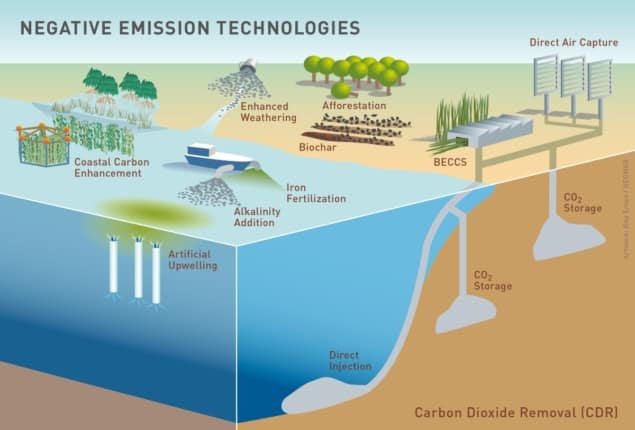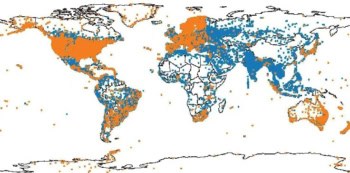
Experts agree that efforts to remove CO2 from the atmosphere over coming decades will need to encompass a broad range of techniques. Despite this, some technologies are still overlooked by current models, and even those that have been studied are generally considered in isolation. This, at least, is the situation according to a sample of anonymous specialists, who were questioned by Wilfried Rickels and colleagues at the Kiel Institute for the World Economy and the GEOMAR Helmholtz Centre for Ocean Research Kiel in Germany.
The researchers sent questionnaires to experts in the use of either Earth system models (ESMs) or integrated assessment models (IAMs). ESMs are computer models that simulate interactions between physical and biogeochemical processes at the global scale. IAMs are simpler models used to derive optimal climate policies.
“In general, ESMs aim at representing the Earth system with as much detail as possible,” says Rickels. “IAMs, on the other hand, aim at representing the Earth system only in as much detail as necessary to answer a specific question about how the economy, society and natural systems interact.”
The idea was to get a measure of how experts rate the potential of various negative emission technologies (NETs), and to identify the approaches that need more investigation. Such technologies, which remove carbon from the atmosphere, will be crucial to fulfil the goal of reducing net carbon emissions to zero by the middle of this century. This is a necessary target if global temperature rise is to be limited to 1.5°C above the pre-industrial average.
The respondents comprised 32 experts in ESMs and 18 in IAMs, and though they agreed overall that multiple NETs are required, they disagreed about the details. As well as differing in what they chose to include in a portfolio of NETs, the two groups showed a marked divergence in the confidence that they have in their models: ESM specialists were much less likely to report that their models represent carbon fluxes and removal pathways sufficiently.
One area where this divergence was especially striking was in the panel’s consideration of one particular NET – bioenergy with carbon capture and storage (BECCS). In BECCS, plant crops are grown expressly to be burned as fuel, with the resulting CO2 captured and sequestered underground in depleted gas reservoirs. The approach is one of the most studied and widely publicized techniques, which was reflected in the IAM experts’ opinion that their models give a good account of the processes involved. The ESM group, in contrast, generally judged the geological storage component to be insufficiently represented in ESMs, and offered no consensus on the atmosphere-to-biosphere part of the process.
An aspect of BECCS that the two groups did agree on was that the approach is highly constrained by its limited cost-effectiveness, competition with other uses of farmland and the political difficulty of implementing it. Rickels and colleagues suggest, therefore, that despite featuring highly in the two groups’ favoured NET portfolios, BECCS is likely to make a smaller contribution to drawing down carbon than is commonly expected.
Perhaps the most promising NET considered by the experts – or at least the one with the fewest constraints overall – is direct air capture (DAC) of atmospheric carbon. Like BECCS, this approach would see CO2 stored underground, but in this case the gas is taken straight from the air using industrial processes. This has the benefits of avoiding competition with other land users and being much more politically acceptable. The downsides are its current high cost and the fact that, as with BECCS, the issue of long-term geological storage of CO2 has yet to be resolved.
To some extent, highlighting a single promising contributor like this illustrates one of the problems that Rickels and colleagues identified. The problem is that, so far, IAMs and ESMs have considered individual NETs in isolation, whereas a proper investigation of their prospects needs to cover a host of different approaches so that it can predict how they interact – with each other, with natural physical processes, and with various aspects of society and the economy. At the moment, integrating all of these factors into a single computer model is still very challenging, as the various interactions are not yet well studied.
Despite the absence of such integrated models, Rickels – himself an expert on IAMs – agrees with the panel that a large number of technologies will be part of the portfolio, including less widely publicized approaches like ocean alkalinity management.
Regarding the future share of specific NETs, “DAC has the strongest industrial component (i.e. offering the strongest prospects of cost reductions while at the same time allowing carbon removal to be verified without model assistance) and it does not affect natural cycles,” says Rickels. “Accordingly, I believe that the share of this technology is underestimated in current studies.”
Rickels and colleagues report their findings in Environmental Research Letters.


